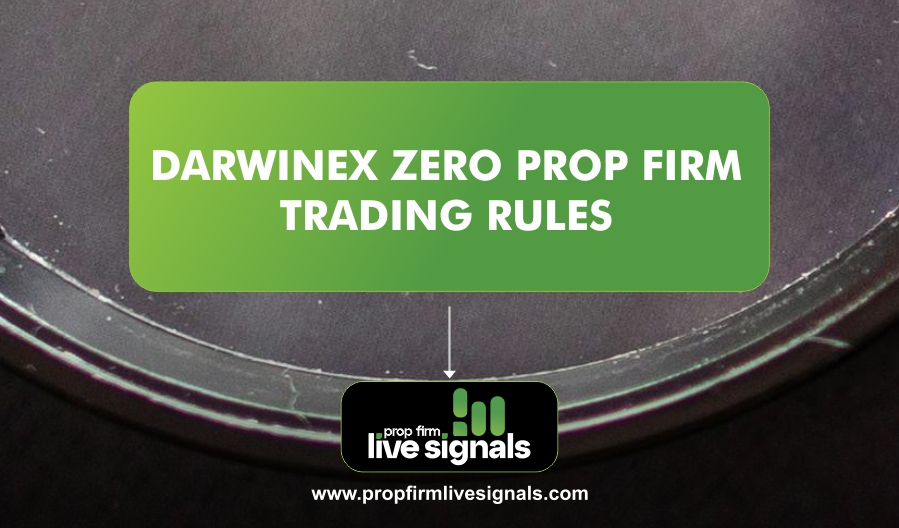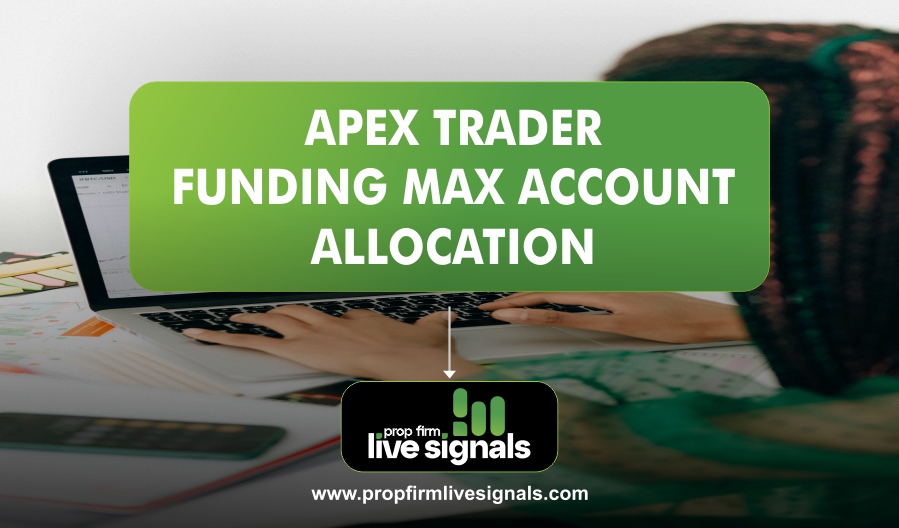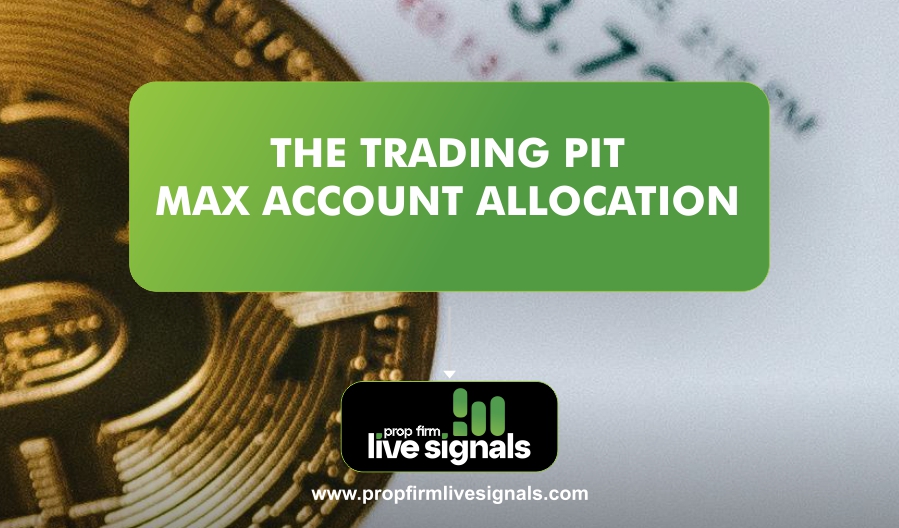In the competitive landscape of futures trading, prop firms have become an attractive option for many traders seeking to grow their careers without having to invest substantial capital upfront. But while this setup offers great potential, it also comes with a unique set of challenges. Traders must navigate specific rules that govern everything from risk management and profit sharing to position size and trade execution. Understanding and following these My Funded Futures Trading Rules is essential to maintaining your account and advancing within a funded futures prop firm.
What Is My Funded Futures Prop Firm?
My funded futures prop firm is a proprietary trading firm that provides capital to traders to trade futures contracts. The primary benefit to the trader is that they get to trade with significant amounts of capital without risking their own money. The firm typically takes a cut of the profits in exchange for this funding, and in return, the trader must follow a set of rules designed to protect both the trader and the firm’s capital.
Funded futures prop firms are growing in popularity because they provide opportunities for skilled traders to profit without requiring large amounts of initial capital. The trader doesn’t have to risk personal funds, but the trade-off is a requirement to follow specific rules set by the firm.
What Are Funded Futures Trading Accounts?
A funded futures trading account is an account where the trader is given access to the firm’s capital for trading futures. These accounts are typically provided after the trader successfully passes an evaluation phase, which tests their ability to manage risk, use proper strategies, and maintain profitability.
The beauty of these accounts is that they come with significant leverage, allowing traders to take larger positions than they would if they were trading with their personal funds. However, the larger the position, the higher the risk, which is why firms enforce strict risk management rules.
How Do Funded Futures Prop Firms Work?
The process of getting started with a funded futures prop firm typically involves several key stages:
- Application Process: Traders apply to a prop firm and go through an onboarding process. The firm usually requires a resume, trading history, and sometimes a background check.
- Evaluation Account: Most firms require traders to first pass an evaluation phase. This phase typically involves trading a demo account with specific risk parameters and profit targets. The goal of this phase is to evaluate the trader’s performance and adherence to the firm’s rules.
- Live Funded Account: Upon successful completion of the evaluation phase, the trader is granted a live funded account. This is where they can trade with real capital, but they must continue to follow the firm’s trading rules.
- Profit Sharing: After making profits, the trader will share a portion with the prop firm based on the agreed-upon profit-sharing model. This is typically a percentage of the profits, with the trader retaining the rest.
Key Benefits of Funded Futures Trading Accounts
- Access to Capital: The most obvious benefit is access to significant capital without risking personal funds.
- No Personal Risk: Traders don’t have to worry about losing their own money.
- Profit-Sharing: Traders can earn a percentage of the profits they generate for the firm.
- Opportunity for Growth: Successful traders may have the opportunity to scale up their accounts over time.
My Funded Futures Prop Firm Trading Rules
The rules set by funded futures prop firms are vital to the success of both the trader and the firm. Below are the key rules you should be aware of.
Risk Management Rules
Risk management is the cornerstone of funded futures trading. Prop firms require traders to strictly adhere to specific risk limits to protect the firm’s capital. Common risk management rules include:
- Max Drawdown Limit: This is the maximum amount a trader is allowed to lose before their account is suspended or terminated. This is typically expressed as a percentage (e.g., 5% or 10%) of the account balance. Once the trader hits the drawdown limit, they are no longer able to trade.
- Daily Loss Limits: These rules limit the amount a trader can lose in a single day. If the daily loss limit is hit, the trader’s account is automatically suspended for the rest of the day, and they must resume trading the next day.
- Risk-to-Reward Ratios: Many firms require traders to maintain a minimum risk-to-reward ratio (e.g., 1:2 or higher). This ensures that traders are aiming for larger rewards than the risks they are taking.
- Stop-Loss Requirements: Some firms may require traders to use stop-loss orders to protect against extreme losses. This is particularly common in firms that emphasize strict risk management policies.
Trade Size and Position Limits
Funded futures prop firms often restrict trade sizes to prevent traders from taking on excessive risk.
- Position Size Limits: Traders may be restricted in how many contracts they can hold at once. For example, a trader may only be allowed to hold a maximum of 5 contracts per trade, depending on the firm’s guidelines.
- Leverage Restrictions: Prop firms typically offer a higher degree of leverage compared to retail brokers. However, they impose limits on leverage to manage risk. Traders should be careful not to exceed the firm’s leverage limits when opening positions.
Trading Hours and Market Access
Each funded futures prop firm may have different rules about when and where you can trade:
- Trading Hours: Some firms allow traders to trade during specific hours, while others may offer 24/7 access to markets. It’s crucial to follow the firm’s specified trading hours to avoid penalties.
- Market Restrictions: Not all markets may be available for trading. Some firms restrict access to certain futures contracts or financial instruments.
Profit Sharing and Withdrawal Guidelines
Understanding the firm’s profit-sharing model is crucial for success. Each prop firm will outline how profits are split between the trader and the firm. Common profit-sharing arrangements may include:
- Profit Split: A typical profit split could be 80/20, with 80% going to the trader and 20% going to the firm.
- Withdrawal Limits: Firms may have specific withdrawal thresholds, such as a minimum amount of profits that need to be reached before a withdrawal is permitted.
- Withdrawal Frequency: Firms may only allow withdrawals on a monthly or quarterly basis, or may have more flexible options depending on the trader’s performance.
Types of Prop Firm Trading Evaluations and Accounts
Evaluation Accounts
The evaluation process is designed to ensure that only skilled traders are granted access to live funded accounts. These evaluation accounts come with specific rules regarding:
- Profit Targets: Traders may need to achieve a certain profit target (e.g., 10% profit in 30 days) without exceeding a maximum drawdown or violating other rules.
- Risk Rules: Evaluation accounts typically have stricter risk management rules than live accounts. For instance, some firms might have a more conservative daily loss limit during the evaluation phase.
Live Funded Accounts
After passing the evaluation, traders are granted access to live funded accounts. These accounts are real money, and traders are responsible for managing them according to the prop firm’s trading rules. The profit-sharing model typically applies at this stage, and traders begin sharing a percentage of their profits with the firm.
Common Mistakes to Avoid in Funded Futures Trading
While following the rules is vital, traders also need to be aware of common mistakes that can lead to account termination or loss of funding:
- Over-Leveraging: Using too much leverage can result in substantial losses. Traders should always remain within the firm’s prescribed leverage limits.
- Breaking Risk Management Rules: Whether it’s exceeding the drawdown limit, violating stop-loss requirements, or taking on too much risk, failing to adhere to the firm’s risk management rules can quickly lead to the suspension or termination of an account.
- Failure to Follow Position Size Guidelines: Ignoring trade size limits is another common mistake. Exceeding position size restrictions can result in penalties or loss of funding.
Choosing the Right Funded Futures Prop Firm
When selecting a prop firm, consider the following factors:
- Reputation: Research the firm’s history, reviews, and reputation in the industry.
- Fee Structure: Some firms charge for evaluation, while others may offer a free trial. Ensure you understand any upfront fees.
- Support: Choose a firm with strong customer service and educational resources to guide you along your journey.
Advanced Strategies for Success
1. Psychological Discipline
Developing emotional control and psychological discipline is essential for navigating the highs and lows of funded futures trading.
2. Backtesting and Strategy Optimization
Always backtest your strategies before applying them to real trading. Use historical data to fine-tune your approach and optimize performance.
3. Staying Updated with Market Trends
Stay informed on market news and global events that could impact futures prices, as this can provide a significant edge in your trading decisions.
Conclusion
The world of funded futures prop firms offers an excellent opportunity for skilled traders to access significant capital without risking their own funds. However, success hinges on a deep understanding of the firm’s trading rules. By following risk management guidelines, adhering to position size limits, and staying disciplined, you can increase your chances of success in this exciting trading landscape.
If you’re serious about pursuing a career with a funded futures prop firm, always remember to prioritize risk management, maintain consistency, align with My Funded Futures Trading Rules and keep learning and adapting to market conditions.
Frequently Asked Questions (FAQ)
What happens if I violate the My Funded Futures Trading Rules in my funded account?
If you violate any of the trading rules, you may face penalties, such as temporary suspension of your account, a permanent ban, or a reduction in the leverage available to you.
Can I trade any futures contracts with my funded account?
Some firms restrict traders to specific markets, such as stock index futures, commodities, or forex. Always check the firm’s available market offerings.
How long does it take to get funded after passing the evaluation?
Once you’ve passed the evaluation, the transition to a live account is typically quick, usually within 2-5 business days.
What happens if I exceed the drawdown limit?
If you exceed the drawdown limit, your account may be frozen or terminated, and you may be required to start the evaluation process again.
Are there any restrictions on withdrawal?
Most firms have a minimum profit threshold that must be met before withdrawals are allowed. Withdrawal frequency can also vary depending on the firm’s policies.




